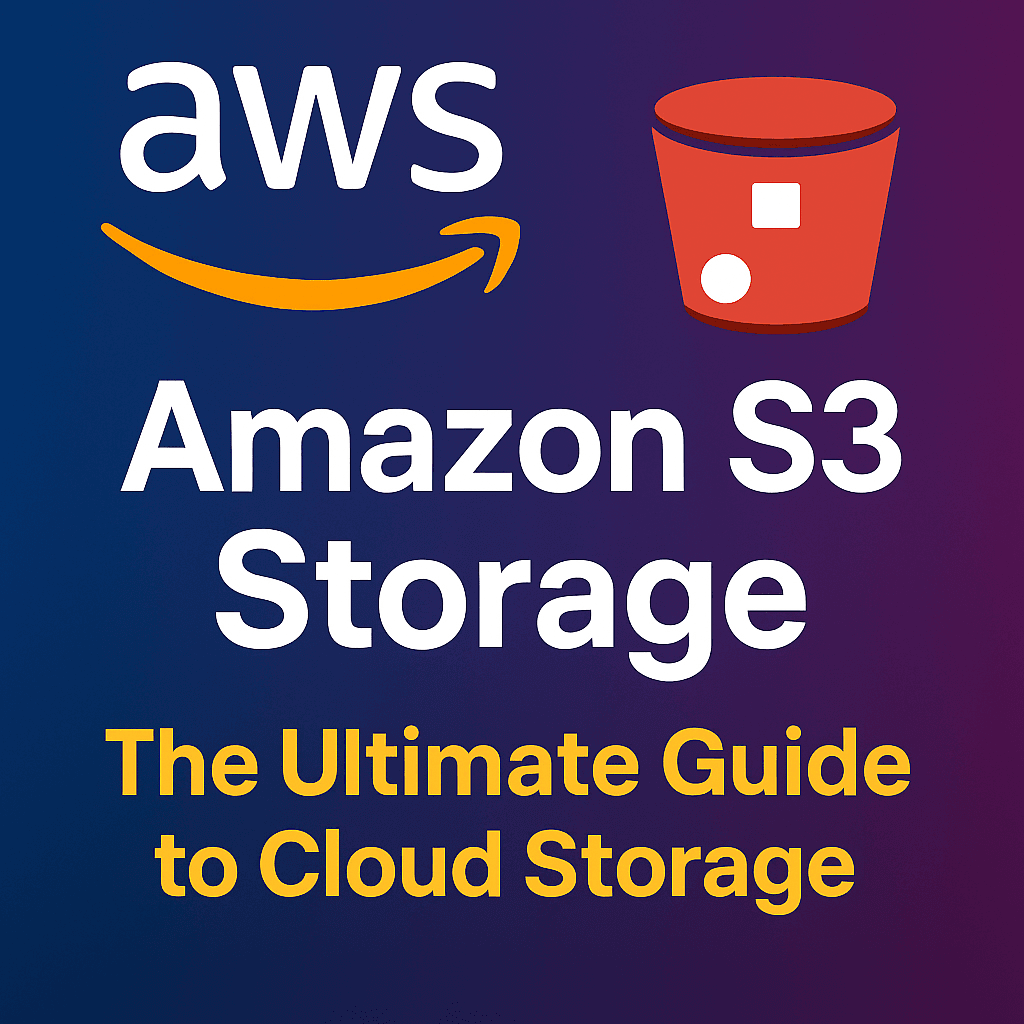Table of Contents
ToggleIntroduction
In our fast-paced, digital-first world, the need for reliable and scalable cloud storage is significant. Businesses and individuals generate more data than ever, from high-resolution media files to important business analytics.
This increase has led to a demand for secure, accessible, and cost-effective storage solutions. Amazon S3 (Simple Storage Service) meets this need. It is a key part of modern cloud infrastructure that has changed how organizations store, manage, and access data.
Since its launch in 2006, S3 storage has become the preferred storage platform for startups, enterprises, and developers worldwide. Its unmatched scalability, strong security, and smooth integration with the AWS ecosystem make it a leader in cloud storage.
In this article, we will explore what Amazon S3 is, its main features, the benefits it provides, common use cases, and how to get started. Whether you’re a business owner, developer, or tech enthusiast, this blog will help us to see why Amazon S3 is important in today’s data-driven world.
What is Amazon S3 Storage?
Amazon Simple Storage Service (S3) is a cloud-based object storage service from Amazon Web Services (AWS). S3 lets users store and retrieve any amount of data from anywhere on the web, at any time. Unlike traditional file storage, S3 organizes data as “objects” within “buckets.” This setup makes it great for managing large amounts of unstructured data.
Primary Functions and Features
- Data Storage: Amazon S3 can hold nearly unlimited amounts of data. This includes everything from small documents to terabytes of video or backup files.
- Accessibility: You can access data stored in S3 through a simple web interface, APIs, or by integrating with other AWS services. This global access means your data is always available whether you are in the office or on the other side of the world.
- Scalability: S3 automatically adjusts to handle increases in traffic and storage needs without any manual setup.
Types of object format supported by Amazon S3 .
Since AWS S3 storage is very versatile. It supports several types of data like:
- Images and videos for media and entertainment platforms.
- Backup files and disaster recovery data for businesses.
- Log files and analytics data for big data applications.
- Software binaries and static website content.
This flexibility has made S3 a key part of cloud-based application development and data management.
Key Features of Amazon S3
Amazon S3 has a strong feature set to meet the varied needs of businesses and developers. Here are its main capabilities.
1. Storage Classes – S3 provides different storage classes, allowing users to control costs based on how often and how quickly they need to access data.
- S3 Standard: This is for data that is accessed frequently. It offers low latency and high throughput.
- S3 Intelligent-Tiering: This class automatically moves data between frequent and infrequent access tiers. It helps reduce costs while maintaining performance.
- S3 Glacier & Glacier Deep Archive: These options are affordable for long-term storage of data that is rarely accessed but needs to be kept for regulations or backups.
According to AWS, choosing the right storage class can cut storage costs by up to 70% compared to standard options.
2. Security and Compliance – Amazon S3 is built with these security in mind.
- Encryption: Data can be encrypted at rest using AWS Key Management Service (KMS) or server-side encryption. It can also be encrypted in transit using SSL/TLS protocols.
- IAM Policies: Fine control over access is available through AWS Identity and Access Management (IAM). Only authorized users and applications can access your buckets.
- Compliance: S3 meets strict compliance standards like HIPAA, GDPR, and PCI-DSS, making it safe for sensitive data across industries.
“S3’s strong security features help organizations meet the highest standards for data protection.” – Amazon Web Services.
3. Data Management Features – Good data management is key for long term growth
- Versioning: This feature keeps multiple versions of an object, protecting against accidental deletions or overwrites.
- Lifecycle Policies: Automate the movement or deletion of objects based on set rules. This helps manage costs and storage efficiency.
- Replication: We can easily copy data across AWS regions for disaster recovery and compliance.
4. Seamless Integration – Amazon S3 works very well with other AWS services:
- AWS Lambda: This lets you trigger serverless functions in response to S3 events, like new file uploads.
- Amazon CloudFront: You can distribute S3-hosted content globally with low latency.
- AWS Data Analytics Tools: Processing and analyzing big data stored in S3 is simple with tools like Amazon Athena, Redshift, or EMR.
Benefits of Using Amazon S3
Use Cases for Amazon S3
- Healthcare: From X-rays to patient records, healthcare providers use S3 to store sensitive medical data securely. Plus, it meets strict compliance standards like HIPAA, so peace of mind comes built-in.
- Finance: Banks and financial institutions rely on S3 to archive transaction histories, audit logs, and regulatory data, ensuring it’s accessible when needed and protected when it’s not.
- Education: Schools and universities store and distribute e-learning content, lecture recordings, and student resources, making remote learning smoother and more scalable.
Explore more detailed Amazon S3 official documentation provided by AWS.











